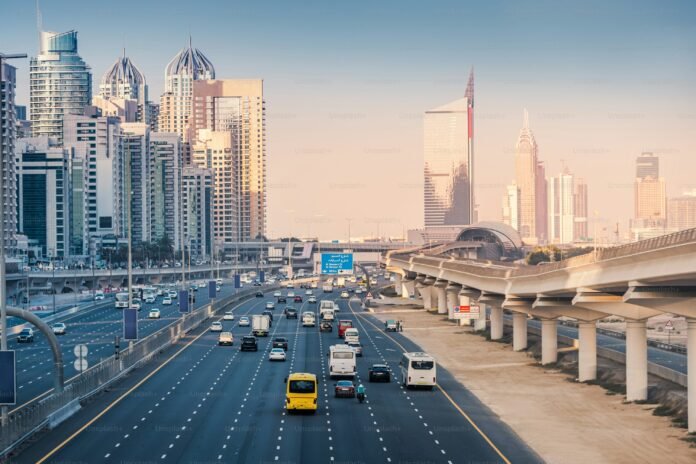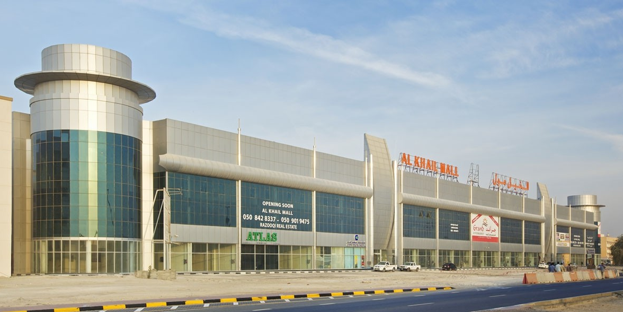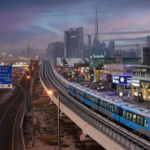Safety Tips for Tourists Driving in the UAE
Driving is one of the best ways to explore the Emirates, but understanding safety tips for tourists driving in the UAE is crucial before you get behind the wheel. The UAE has modern highways, clear signage and efficient city roads, yet it also has high speeds, strict traffic rules and unique road conditions that can surprise visitors who are used to very different driving cultures. With the right preparation, you can enjoy the freedom of the road while staying safe and compliant with local law.
Most visitors choose a rental vehicle rather than bringing their own car, and a reliable Dubai car rental makes it easy to move between emirates, visit beaches and mountains, or reach desert camps that are far from public transport lines. Knowing how to choose, check and drive your rental car safely will turn your trip into a smooth experience instead of a stressful one.
Why Safety Tips for Tourists Driving in the UAE Matter
Understanding safety tips for tourists driving in the UAE is not just about avoiding fines; it is about protecting yourself, your passengers and other road users in a country where traffic can move very quickly. The UAE has invested heavily in road infrastructure, with multi-lane highways, extensive lighting and clear lane markings, but it also enforces strict penalties for violations such as speeding, tailgating and reckless driving. Visitors who are unfamiliar with these standards can easily make mistakes without realizing it.
A few key facts show why preparation is important:
⦁ Highways often have limits of 120–140 km/h, which can feel fast if you are used to lower speeds.
⦁ Speed cameras and radars are common, and fines are usually automatically recorded to the vehicle.
⦁ The mix of local drivers, long-distance truck traffic and tourists means you must constantly stay alert.
Simple “risk awareness” chart for UAE driving:
⦁ Main risk: High speeds and late lane changes on highways
⦁ Tourist mistake: Staying in the fast lane or braking suddenly
⦁ Safer habit: Keep right except to overtake and plan lane changes early
Legal Requirements and Documents for Safe Driving in the UAE
Knowing the legal basics is one of the most important UAE driving safety tips for tourists, because police checks and camera systems are common and the country has little tolerance for driving without proper authorization. Having the right documents also makes any roadside interaction or accident report easier.
Essential Papers Tourists Must Carry
Every tourist who plans to drive should have:
⦁ Valid national driving license from their home country.
⦁ International Driving Permit (IDP) if their license is not from a country recognized for direct use in the UAE.
⦁ Passport and visa copy, especially on inter-emirate trips.
⦁ Rental agreement in the driver’s name and insurance details clearly stating coverage.
⦁ Credit card used for rental, since fines and tolls may be charged later.
The minimum age to rent is usually 21 or 25, depending on the company and vehicle category. Verify this in advance so you are not surprised at the counter.
Key Traffic Laws All Visitors Should Know
To follow the core safety tips for tourists driving in the UAE, be aware of these rules:
⦁ Seat belts: Mandatory for all passengers; children must use suitable child seats based on age and size.
⦁ Mobile phones: Handheld use while driving is illegal; use hands-free only if necessary.
⦁ Alcohol and driving: The UAE enforces a zero-tolerance approach; do not drive if you have consumed any alcohol.
⦁ Right-hand traffic: The UAE drives on the right side of the road, with overtaking usually on the left.
⦁ Lane discipline: You must signal before changing lanes and avoid weaving or cutting in front of others.
Ignoring these rules can lead to heavy fines, black points on your record (linked to your rental) and, in serious cases, vehicle impoundment.
Practical Road Safety Tips for Tourists Driving in the UAE
Beyond the legal basics, understanding everyday driving patterns will protect you in real traffic situations. Many safety tips for tourists driving in the UAE focus on defensive driving and anticipation, because conditions can change quickly, especially on multi-lane highways.
Adapting to Local Driving Styles and Road Conditions
Traffic flows fast, and local drivers often know the roads very well, which can make them more confident or impatient than visitors. As a tourist you should:
⦁ Stay calm if others drive assertively; do not compete or respond with aggression.
⦁ Avoid the far-left fast lane unless you are overtaking; slower cars should use the right-hand lanes.
⦁ Check mirrors frequently, because vehicles can appear quickly from behind at high speed.
⦁ Expect last-minute exits from some drivers and keep a safe space around your car.
Urban roads in Dubai and Abu Dhabi are generally smooth, but you might encounter:
⦁ Sudden lane merges near construction zones.
⦁ Pedestrian crossings near malls and residential areas.
⦁ Sand on the road in some outer areas, which can reduce traction.
Speed Limits, Cameras and Lane Discipline
Among the most important UAE driving safety tips is respecting speed limits and lane markings. Limits are clearly posted, but they can change from one zone to another quickly, especially near exits, schools or interchanges. You should:
⦁ Watch for signboards that show changes in speed; do not rely solely on navigation apps.
⦁ Keep a steady speed within the posted range, avoiding rapid acceleration and hard braking.
⦁ Respect solid lines and do not cross them to change lanes or make last-second exits.
⦁ Anticipate speed cameras before and after major interchanges and on long straight stretches.
Remember that fines can be applied even if you never see a police officer, as most detection is automatic.
Safe Night and Desert Driving in the UAE
Many visitors enjoy night drives or trips to desert areas, but they demand extra caution:
⦁ At night, headlights from oncoming cars and reflections from signs can be intense, so reduce speed if visibility feels uncomfortable.
⦁ In desert zones, animals may stray onto roads, especially in less populated emirates, so scan the sides of the highway carefully.
⦁ Avoid leaving paved roads unless you have a 4×4, proper training and are part of a guided group. Standard rental cars are not designed for soft sand.
Vehicle Safety Checks Before You Drive
Good safety tips for tourists driving in the UAE start before you leave the rental parking lot. A slow, thorough inspection can prevent breakdowns, disputes and dangerous situations later.
What to Inspect on Your Rental Car
Before accepting the car, walk around it and check:
⦁ Tyres: Look for adequate tread, no bulges and correct inflation.
⦁ Lights: Test headlights, brake lights and indicators.
⦁ Brakes and steering: Take a short test drive around the lot to feel for any vibrations or pulling.
⦁ Fuel type and level: Confirm whether the car uses petrol and where the fuel cap is located.
⦁ Existing damage: Photograph scratches, dents and interior marks so you are not blamed later.
If anything feels unsafe, request another vehicle. A reputable rental provider will prioritize your security and comfort.
Safety Gear and Emergency Prep
It is wise to carry:
⦁ A phone charger and power bank, since navigation drains batteries quickly.
⦁ Bottled water for all passengers, especially on longer routes.
⦁ A basic first-aid kit, which many cars already include.
⦁ A warning triangle and reflective vest for use in case of breakdowns on highway shoulders.
These small items support the broader safety tips for tourists driving in the UAE by ensuring you are not stranded without essentials.
Navigating Cities and Highways Safely
Driving in Dubai, Abu Dhabi and other emirates is straightforward if you follow signs and stay patient, but traffic intensity can surprise new visitors at peak times.
Defensive Driving in Dubai, Abu Dhabi and Other Cities
To drive safely in busy areas:
⦁ Plan your route in advance and study major exits so you are not forced into last-second lane changes.
⦁ Avoid rush hours when possible, especially 7–9 am and 4–7 pm on working days.
⦁ Keep both hands on the wheel and minimize distractions from music systems or conversations.
⦁ Respect pedestrian crossings and school zones, where fines are particularly strict.
Parking, Tolls and Service Roads
Parking systems vary between emirates but are usually well-marked:
⦁ Look for colored lines and signage indicating paid parking times and limits.
⦁ Use official machines or SMS systems where available to pay; do not leave your car without confirming payment.
For highways, some routes use electronic toll systems such as Salik in Dubai, recorded automatically via a tag on the windscreen. Rental companies usually handle tolls and charge them to you later, so the safest tip is simply to drive normally through toll gates without sudden lane changes or stops.
Service roads parallel to main highways give access to fuel stations, cafes and shops. Enter and exit them calmly, checking mirrors and blind spots because traffic flows differently from the main lanes.
What to Do in an Accident or Breakdown in the UAE
Even if you follow every safety tip for tourists driving in the UAE, incidents can still happen. Knowing how to react will keep everyone safer and ensure that insurance processes run smoothly.
If you are involved in a minor collision with no injuries:
⦁ Move vehicles to the side of the road if safe to do so, especially on highways.
⦁ Turn on hazard lights and place a warning triangle behind your car if available.
⦁ Exchange contact and vehicle details with the other driver.
⦁ Contact the police and your rental company as instructed in your rental paperwork.
For breakdowns:
⦁ Pull as far onto the shoulder as possible.
⦁ Keep passengers away from the road, ideally behind crash barriers if present.
⦁ Call roadside assistance or the number provided by your rental company.
Do not attempt dangerous repairs on a busy highway and avoid crossing multiple lanes on foot.
Final Safety Tips for Tourists Driving in the UAE
Mastering safety tips for tourists driving in the UAE allows you to enjoy modern highways, scenic coastal routes and desert landscapes with confidence. By respecting local laws, preparing your documents, checking your vehicle carefully and practicing calm, defensive driving, you drastically reduce risks and make your journey smoother for everyone in the car. Remember to control your speed, keep your distance, plan routes before you set off and never drive under the influence of alcohol or extreme fatigue. With these habits in place, driving in the UAE becomes not just safe but genuinely enjoyable, letting you discover more of the country than you ever could by staying on tour buses or in taxis.









